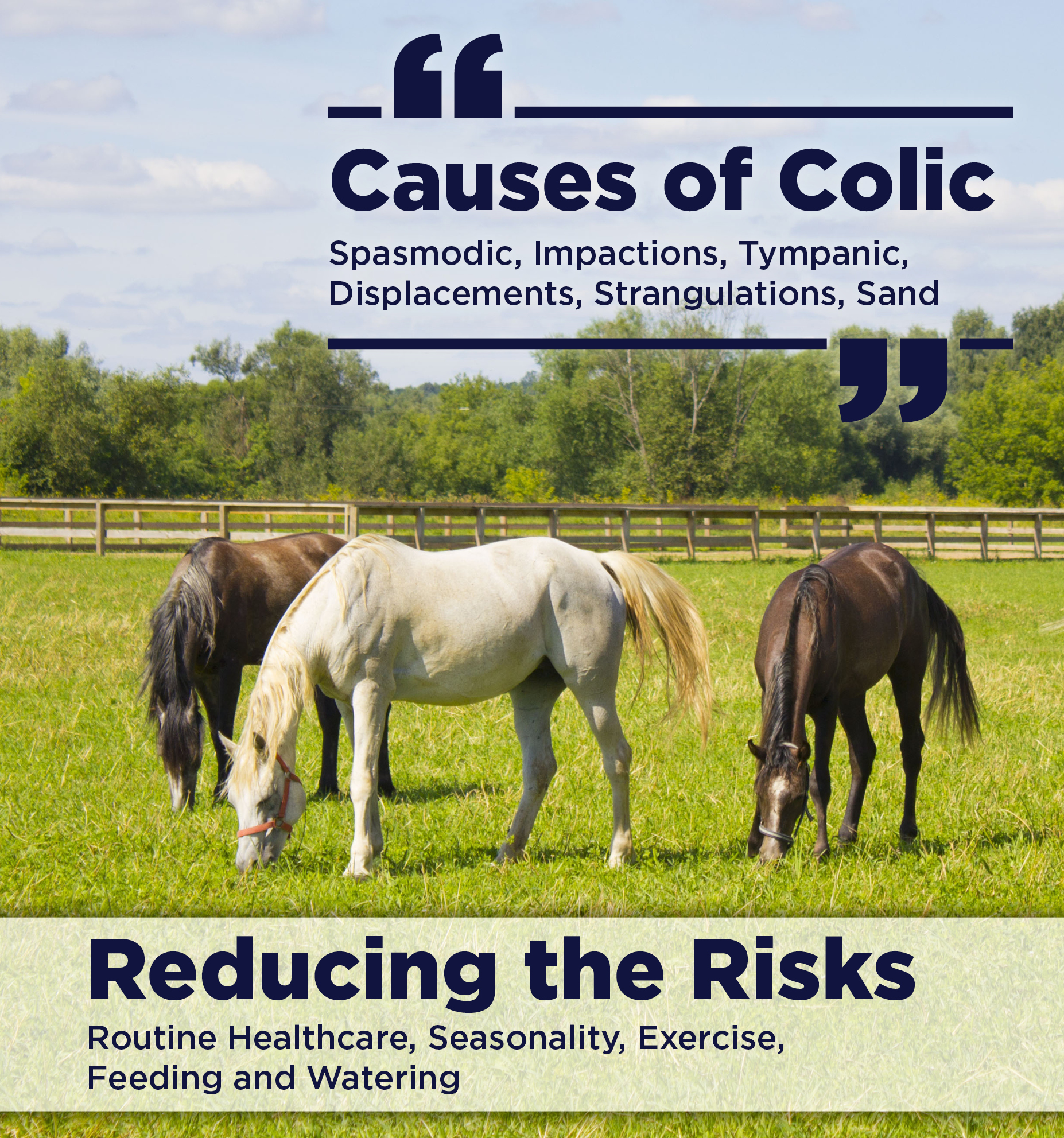As the Spring grass starts to grow cases of colic become more prevalent at this time of year. Alongside this, changes in exercise and feeding regimes due to Covid-19 may also increase the risk of colic. Our latest blog shares the types of colic that can occur and how to reduce risks and management practices to help.
Types:
Spasmodic – One of the most common types of colic but difficult to pinpoint a specific cause, loud gut sounds may be heard and the horse will experience intermittent and acute bouts of pain
Impactions – Usually occurs in the large intestine when a firm, dry ball of solid material prevents normal passage, colic signs may be subtle and the horse will experience low grade pain for prolonged periods
Tympanic – Caused by excess gas accumulation in the intestines causing them to over stretch, high pitch gut sounds may be heard and sometimes horses look bloated, the horse’s pain levels can vary from mild to severe
Displacements – Happens when a section of the gut moves to an abnormal position, colic signs may be variable dependent on the type of displacement and whether it causes an obstruction, pain levels can therefore vary
Strangulations – One of the most severe causes of colic where an obstruction of blood flow commonly from rotation of the intestine around its attachment to the gut wall can completely cut off blood flow to that part of the gut, signs of shock may be present (sweating, dullness and depression), the horse will likely be in severe and continuous pain and need surgery urgently
Sand – Occurs due to an accumulation of sand/dirt within the gut, signs vary dependent on the severity of the irritation and build up within the intestines, sand can sometimes be present in droppings, the horse may experience mild to marked pain and/or diarrhoea
Reducing the Risks:
Routine Healthcare –
Maintain a strategic worm control programme
Regular dental checks
Monitor your horse to know their ‘normal’
Seasonality
Be mindful of the changes in grass – energy content, nutrients (i.e. sugar), vitamin, and mineral levels can change throughout the year
Exercise
Avoid sudden changes in exercise intensity and always make time for warmups and cool downs
Replenish electrolytes in a balanced way after strenuous work
Ensure rest and recovery needs are incorporated into exercise programmes
Feeding and Watering:
- Ensure most of your horse’s diet is forage based (i.e. hay, haylage, grass)
- Know your forage – testing nutrients, vitamins, minerals, and hygiene can help inform decisions about which additional products are needed
- Feed a balanced diet – ensure your horse gets all its required vitamins and minerals in its daily ration, there are many low-calorie ways to achieve this
- Choose dietary components that are suited to your horse’s workload and individual needs
- Do not make sudden changes to diet (introduce new products gradually over 10-14 days where possible)
- Try to feed concentrate in little and often proportions
- Ensure clean, fresh drinking water is always available
- Avoid grazing on sandy surfaces and/or overly bare pastures
- Consider mixing a short chop fibre with concentrate in meals
- Seek out professional advice and/or peer reviewed scientific resources when looking for advice
- Speak to our nutrition team about which D&H forages, concentrates, and supplements can help support your horse’s individual needs and their ongoing digestive health




